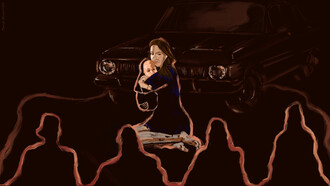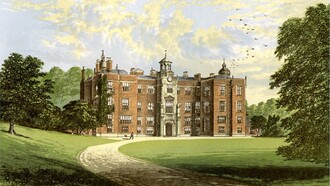As summer tourism comes to an end in Italy and students return back to the classroom, Jill Alexy, the founder of SeeTheSacred, has proven to be adaptable, creative, and determined in how she designs immersive experiences that blend travel, life-long learning, and culture. To develop the space where culture & travel & education intersect, technology can be a valuable asset to complementing, but never replacing, an in-person, on-site encounter or exchange.
No matter where you are in the world, drinking apple cider as autumn approaches or enjoying fine wine in front of a cozy fireplace, you can use video- and on-demand online interfaces to “meet” with friends and relive the beauty of the Sistine Chapel, reexamine the frescoes by Giotto in the church of San Francesco in Assisi, or remember the sacredness of the 12th century Sainte Chapelle in France. And what’s more, the opportunities to re-learn, re-visit, and re-member in turn inspire a yearning to return to Rome or France in the new year of 2023!
Saint Peter’s Basilica is one of the most famous and beautiful churches in the world. Construction began in 1506 by Architect Donato Bramante ( 1445-1513) under the Papacy of Julius II (Francesco Delle Rovere, 1443-1513). What is the significance of this Basilica and why? And how can an in-person experience of this beautiful house of worship connect to one’s experience of the sacred space online, from within the confines of their own home?
Jill Alexy:
The Catholic faith teaches and preaches that “the home is the first church.” The importance and sacredness and beauty of this domestic church should never be taken for granted. Therefore, it would be a shame to think that the grandeur and awesomeness of the Basilica of Saint Peter’s in Rome are somehow disconnected from the simple beauty and daily awesomeness of being at home with family. That is why the church, as and built environment, is merely an expression of all that beauty coming together in one: if every domestic church was gathered into one unity; the splendor of such beauty would be infinite. Indeed, such a gathering would be a foretaste of heaven! And indeed, that is what the art and architecture of the church seek to express and convey: the drama of the many-becoming-one and the breathtaking beauty that awaits us as we enter into the forecourt of heaven.
Many people think Saint Peter’s is the “main church” in Catholicism. Indeed, if that title had to go to any one church, it would have to be the Cathedral of Christ the Savior, now known as the Papal Basilica of Saint John Lateran, in Rome. For it is the “cathedra”, or the seat of the Bishop of Rome (thus making it the HQ Church), as well as officially the “mother of all churches.” Rather, Saint Peter’s is a Papal Basilica that has always functioned as a home, a or of finish-line, if you will, for pilgrim saints on a journey. Of course, in the Catholic faith, that journey is towards our ultimate life in Christ and communion with the all-loving Triune God. So, think of Saint Peter’s as a church that exists to gather us in and celebrate our homecoming.
Therefore, to me, it makes total sense that going home, after a visit to such a magnificent space packed with almost limitless meaning and signs and symbols, we would want to think more deeply about the experience and ponder and meditate on the wondrous mystery of it all. What better way to do that from home, with a glass of wine in hand, with friends on the screen! In this way, home as the first church becomes connected to a touristic or liturgical experience of maximal church…and we ready ourselves for a return visit or to visits to new places of inexhaustible beauty and reverence!
It was during the Renaissance that the Roman Popes began to reconstruct the aqueducts, fountains, and monuments throughout the Eternal City. So is it fair to say that the Popes and the Church were the first historic preservationists during the Renaissance, who also availed themselves of whatever cutting-edge technology was available at the time?
Jill Alexy:
The Church, both in the Renaissance and in the period leading up to the Renaissance, always followed a theologically-inspired course of action to build up the common good and renew society: first, acts of charity (loving acts to meet peoples’ basic needs); second, acts of education and formation (building institutions like libraries and collections and universities to form and educate people); third, acts of contemplation and sharing and celebration (building, and decorating or embellishing, magnificent structures like Basilicas, Chapels, Piazzas, and Public Monuments). The powers-that-be decided to invest in renewing ancient technologies, which were new to them at the time, rebuilding public utilities like aqueducts, and drained straight, and wide roads. They also built public housing projects to house the poor and homeless! Running water, ease of transportation via safe and secure roads, and a roof over one’s head freed up lots of people from daily chores– and daily worries!!- that took up a great part of their day. With these hours of each day now free, they could use some spare time to educate their minds and form their hearts and souls. The Church authorities in Rome believed that collections and libraries and colleges could educate, but if they were beautiful and experienced in a balanced and guided way, they also form. Finally, with new know-how gleaned from their education, and with new insights and wisdom gleaned from their formation, there was the time and the energy, and the ability to create truly magnificent public spaces that celebrated human flourishing and a heavenly gaze.
I think this is the great takeaway for modern man (keeping in mind that the Renaissance did indeed give birth to modern man!): we need to both look back to the past, to history, preserve it and restore it and learn from it. But we also need to harness new technologies, and cutting-edge systematic and interdisciplinary approaches in order to both advance society (or the common good), and also help the Church to come alive and be renewed. It seems that, in the very recent past, sometimes the Church in Rome seeks to either disengage from an increasingly global society to focus on local and particular leadership, or it shies away from advancing and learning cutting-edge technologies (not just talking about it and having a meeting or a conference on it, but actually getting involved in it!), but most especially, the Church in Rome separates and distinguishes most competencies across either subject matter or language group or both, when the lessons from the Renaissance literally show us, in the magnificent monuments we still profit from today, that the way forward is through developing and deploying a systematic and interdisciplinary approach to the problems or challenges we face.
We can be preservationists and forward thinkers, we can appreciate the past and its accomplishments while committing ourselves, unashamedly, to new advances because after all, in the famous maxim of Saint Augustine of Hippo, we believe in “beauty ever ancient, ever new.”
This is why I, in my line of work, don’t see any difference between a sustainability project and local direct charity with migrants and refugees really any different from my work in teaching or guiding or strategic consulting. It’s also why I never shy away from blending subject matters when I try to teach or form someone on the significance of, say, the Sistine Chapel. It is also why I believe using technologies like Zoom and WhatsApp, but also moving into the future AR/VR technology, as well as new best practices for leadership and management, are a part of being a modern man (well, in my case woman! ha!), and which take these deep roots from the Renaissance and allow them to flourish in me today, as a civic-minded, practicing and devout Catholic of the third-millennium.
As we emerge into an open world of travel culture and events, savvy technology like streaming live or zooming is in real-life immersive experiences that allow anyone to have a tour-guide or teacher-student experience. How can anyone experience See The Sacred of the Vatican and Europe with you?
Jill Alexy:
Thank you for asking! Along with my comments above, I try to be as interdisciplinary as possible, in order to have as wide a reach as possible with my community of friends and colleagues, guests, and clients. For me that means, hosting small group trips and bespoke events in North America and Europe, but also being available to be a private personal tour guide for a family, or design a family or friends’ group whole trip abroad! It also means working with universities, both Pontifical Universities in Rome as well as universities from (mostly) the United States and the UK, and some government institutions, to be able to teach study abroad programs or design one-off intensive courses. If I am being honest, teaching outside the classroom in this way is where my true passion lies. I get such joy and energy from working with schools and institutions!
But for those who are home-bound, or for those who are in-between trips and in-person events, I try to make content available on my social media, through videos or Vimeo for learning or YouTube for funny anecdotes. On my @seethesacred instagram account, I put together insta-tours: a series of 9-15 posts where I consolidate and summarize the interdisciplinary & speculative content I share in a tour or a class or on a trip: think of it like a high-level summary, with pictures, that you can consume in 5-10minutes, instead of 3 hours or even over the course of several weeks. Ha!
Finally, I am developing courses that blend an “immersive element” like wine tasting or cooking or even physical exercise like a pilates course, with a classic virtual tour of a site of outstanding cultural beauty. A series of six classes are already available for people to watch and follow, on demand, and I even ship folks my favorite wine (or cheese) for that all-important immersive-experiential piece. I will continue to put more such on-demand content available on my platforms, but also develop them with universities and parishes, and businesses, as well as branch out into AR/VR applications of this work.
So, yes!, it is a lot and there are many ways people can link into what I am doing, whether you are interested for you and your family/friends, or on behalf of your institution or business.















